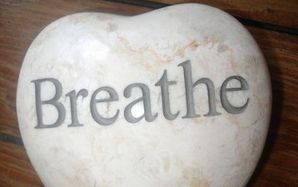
In nadi shodhanam, we breathe through one nostril and then the other, alternating sides in rounds. This breathing technique helps to calm, balance, and regulate both physical and subtle energies. Nadi shodhanam pranayama offers many benefits. It helps to balance and harmonize the body and mind, while deepening inner awareness. While practicing nadi shodhanam pranayama, you are breathing deeply and consciously. This practice is used to balance the 2 sides of the nervous system----the sympathetic that controls “fight or flight” and the parasympathetic that manages “rest and digest”----to regulate stress and relaxation.
Instructions:
Cup your nose with the thumb and the last 2 finders of your right hand. Place your thumb against your right nostril and your last 2 fingers against the left . Press your thumb to close the right nostril while relaxing the fingers to leave the left nostril open. Inhale through the left nostril for a 5-10 count, hold the breath for the same count, and then press your fingers to close the left nostril and exhale on the right side for the same count. Now do the same with the other side by keeping your fingers pressed on the left nostril, while relaxing your thumb to leave the right nostril open. Inhale through the right nostril for 5-10 counts, hold the breath for the same count and then press your thumb to close the right nostril and exhale on the left side for the same count.
Overview:
Inhale left, hold, exhale right, inhale right, hold, exhale left. (One round) Repeat 5-20 rounds.
Instructions:
Cup your nose with the thumb and the last 2 finders of your right hand. Place your thumb against your right nostril and your last 2 fingers against the left . Press your thumb to close the right nostril while relaxing the fingers to leave the left nostril open. Inhale through the left nostril for a 5-10 count, hold the breath for the same count, and then press your fingers to close the left nostril and exhale on the right side for the same count. Now do the same with the other side by keeping your fingers pressed on the left nostril, while relaxing your thumb to leave the right nostril open. Inhale through the right nostril for 5-10 counts, hold the breath for the same count and then press your thumb to close the right nostril and exhale on the left side for the same count.
Overview:
Inhale left, hold, exhale right, inhale right, hold, exhale left. (One round) Repeat 5-20 rounds.

 RSS Feed
RSS Feed